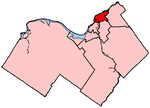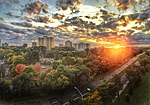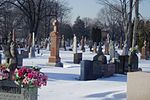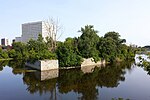CJFO-FM
CJFO-FM (branded as 94,5 Unique FM) is a radio station which broadcasts a francophone community radio format on the frequency 94.5 FM/MHz in Ottawa, Ontario, Canada. Owned by Radio de la communauté francophone d'Ottawa (RCFO), the station received CRTC approval on February 4, 2010.The station officially launched at 6 a.m. on November 15, 2010 after a testing period that began in September 2010.While the Ottawa-Gatineau market is served by several francophone stations, CJFO is the first station in the market targeted specifically to the Franco-Ontarian audience in Ottawa and Eastern Ontario. The commercial francophone outlets are licensed to Gatineau and primarily target listeners on the Quebec side of the Ottawa River. The Radio-Canada outlets focus on not only the National Capital Region, but Canada as a whole. The station is the francophone radio broadcast partner for the Ottawa Senators and the Ottawa Titans.CJFO's studios are located in Vanier, while its transmitter is located in Camp Fortune, Quebec. The station is a member of the Alliance des radios communautaires du Canada.
Excerpt from the Wikipedia article CJFO-FM (License: CC BY-SA 3.0, Authors).CJFO-FM
McArthur Avenue, Ottawa Vanier (Rideau-Vanier)
Geographical coordinates (GPS) Address Nearby Places Show on map
Geographical coordinates (GPS)
| Latitude | Longitude |
|---|---|
| N 45.4315 ° | E -75.6584 ° |
Address
McArthur Avenue 257
K1L 1B1 Ottawa, Vanier (Rideau-Vanier)
Ontario, Canada
Open on Google Maps








